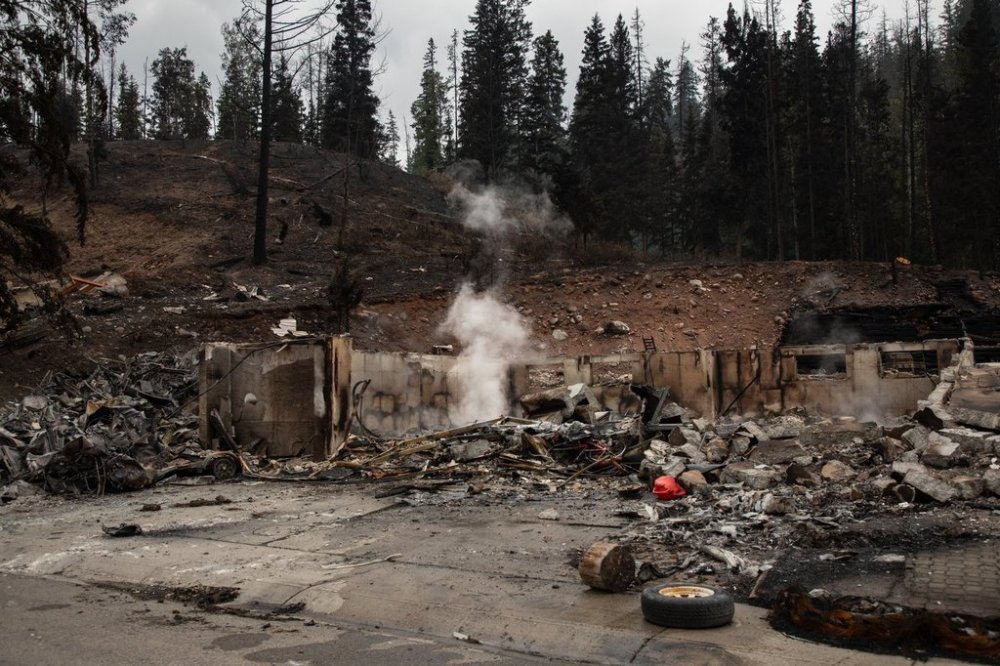Parks Canada releases two reports on Jasper fire confirming cause, development
Advertisement
Read this article for free:
or
Already have an account? Log in here »
We need your support!
Local journalism needs your support!
As we navigate through unprecedented times, our journalists are working harder than ever to bring you the latest local updates to keep you safe and informed.
Now, more than ever, we need your support.
Starting at $15.99 plus taxes every four weeks you can access your Brandon Sun online and full access to all content as it appears on our website.
Subscribe Nowor call circulation directly at (204) 727-0527.
Your pledge helps to ensure we provide the news that matters most to your community!
To continue reading, please subscribe:
Add Brandon Sun access to your Free Press subscription for only an additional
$1 for the first 4 weeks*
*Your next subscription payment will increase by $1.00 and you will be charged $20.00 plus GST for four weeks. After four weeks, your payment will increase to $24.00 plus GST every four weeks.
Read unlimited articles for free today:
or
Already have an account? Log in here »
EDMONTON, ALBERTA, CANADA – Two new reports on last year’s devastating wildfire in Jasper, Alta., confirm the blaze was caused by lightning and accelerated by “tornado-force fire-generated” winds and dry conditions.
The fire, which started as three separate blazes before merging as one, hit town two days after starting and destroyed a third of the community’s structures in July 2024. It forced 25,000 residents and visitors to flee and displaced an estimated 2,000 people.
The reports, commissioned by Parks Canada, say efforts to reduce fuel for wildfires, including prescribed burns, helped mitigate the blaze.

But one of the reports, which looks at how the fire formed and developed, says more burns and other attempts to reduce fuel would have been beneficial, since the fire began in an area south of town that had not burned or been treated in over a century.
“This provided a nearly unbroken corridor for fire spread — excepting the river and highways — that was also aligned to enable wind flow channelling down the (Athabasca River) valley,” it says.
“The extensive fuel continuity enabled unchecked fire growth during the 50-hour window of favourable fire weather following ignition.”
It says another factor aiding the fire’s growth was a mountain pine beetle infestation several years earlier, leaving behind tinder-dry trees.
The favourable fire weather stemmed from minimal rainfall in the weeks leading up to the blaze, combined with “record-high” temperatures in the proceeding days, the report says.
It also says the main column of smoke that towered up over the Rockies, and the amount of fuel the fire was eating up, created its own wind, reaching an estimated speed of up to 200 kilometres per hour.
Just before the fire hit town, the column “collapsed” and blanketed the community with smoke. The report says the collapse also likely “accelerated the pulse of embers into the Jasper townsite.”
The other report, analyzing how the fire travelled through the town, says embers landing on or near buildings caused the first structures to be engulfed.
It says neighbourhood density played a factor in the fire’s spread, as it jumped from one building to the next without having to travel far. Many of the first structures to burn also had roofs made with wood, the report notes.
“Once structures ignited, strong winds drove fire growth through the densely built-up neighbourhoods, with structure-to-structure ignition dominating the spread,” it reads.
Jasper Mayor Richard Ireland, who is about to serve his eighth term as at the community’s helm after being acclaimed as mayor on Monday, said in an interview he was happy to see the report confirm that the town is on the right track, noting it changed its bylaws to prohibit the use of wooden siding or roofing earlier this year.
Ireland said the reports were highly technical but “bring clarity to a really complex wildfire event.”
“I think that they provide opportunities for learning, which are absolutely essential, and in fact, in some cases, they’re already underway,” he said.
When it comes to the more detailed aspects of the findings, Ireland said he didn’t have the technical knowledge to pass judgments.
“We will have to comb through them … but we will use them to full advantage as we move forward with Parks Canada to continue to prepare the community for what could be the next inevitable wildfire,” Ireland said.
Ireland, the only person to hold the title of mayor of Jasper, said it’s his goal for the community to be almost completely rebuilt during the new council term.
“We’re off to perhaps a bit of a slower start than we anticipated with houses in the ground, but that’s starting now to change,” he said.
“In the last six or eight weeks it really has seen a significant uptick in the number of housing starts. It’s really encouraging.”
The two reports come after the town published its own fire report earlier this year, leading to controversy with the province as it said Premier Danielle Smith’s government caused command challenges in the fire response.
Smith demanded an apology from the town over the report, but Ireland stood by it, though he said at the time that he was disappointed the report was being used politically.
This report by The Canadian Press was first published Oct. 21, 2025.
